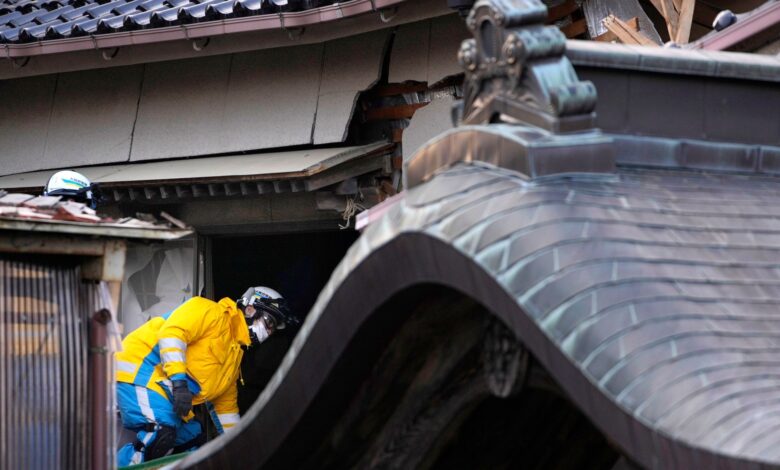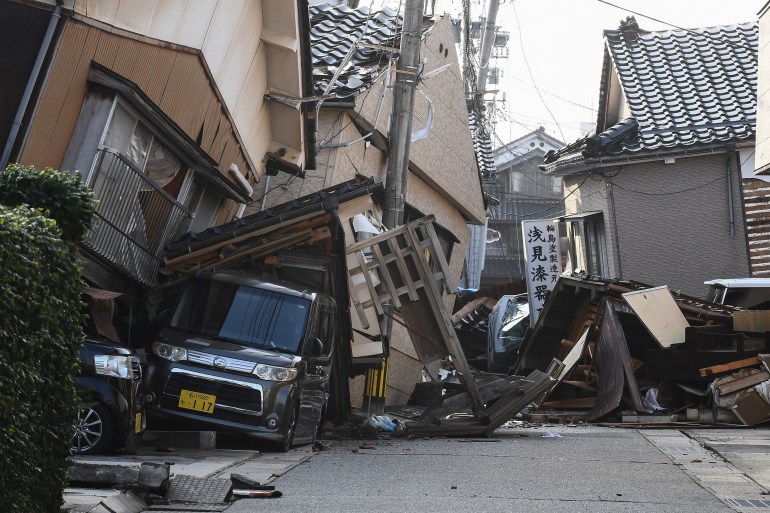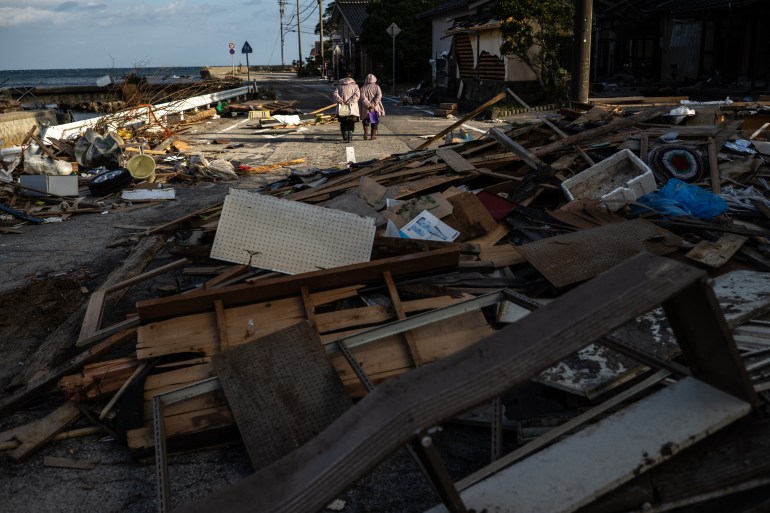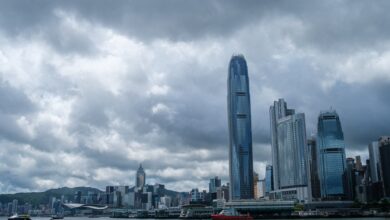Woman in her 90s pulled alive from rubble of Japan earthquake

The 7.6 quake struck on New Year’s Day, causing extensive damage to communities on the Noto Peninsula.
A woman in her 90s has been pulled alive from a collapsed house in western Japan, 124 hours after the area was struck by a powerful earthquake that killed at least 126 people.
The resident of Suzu on the northern tip of the hard-hit Noto Peninsula had survived for more than five days after the 7.6 magnitude quake.
Nationally broadcast news footage showed helmeted rescue workers covering the view of the area with blue plastic, with the woman not visible. Her condition was unclear.
Chances for survival drop sharply after the first 72 hours. About 200 people remain unaccounted for, according to authorities.
Among the 126 dead was a 5-year-old boy who had been recovering from injuries he suffered when boiling water spilled on him during the quake. His condition suddenly worsened and he died on Friday, according to authorities in Ishikawa Prefecture, which includes the Noto Peninsula.
Most of the deaths recorded so far have been in Wajima City, which is also in the north of the peninsula and was the site of a ferocious blaze, and in Suzu. More than 500 people have been injured, at least 27 of them seriously.

In Suzu, where dozens of homes lie in ruins, a dog barked while an AFP team filmed the cleanup operation, the signal of a grim discovery.
“Training for disaster rescue dogs begins with something similar to a game of hide-and-seek,” canine trainer Masayo Kikuchi told the news agency.
“Finally, they are trained to bark when seeing a person under the rubble.”
Houses containing any deaths that are discovered are being marked and left alone until a coroner can come with relatives to identify the body.
‘Really tough’
Continued aftershocks have threatened to bury more homes and block roads that are crucial for relief shipments. With rain and snow forecast for Sunday, officials warned that roads already buckled and cracked by the earthquake could collapse completely.
For Shiro Kokuda, 76, the house in Wajima where he grew up was spared but a nearby temple went up in flames and he was still looking for his friends at evacuation centres.
“It’s been really tough,” he said.
Along Japan’s coastline, power was gradually being restored but water remained in short supply.
Thousands of troops were flying and trucking in water, food and medicine to the more than 30,000 people who had evacuated to auditoriums, schools and other facilities.
The nationally-circulated Yomiuri newspaper reported that its aerial study had located more than 100 landslides in the area and some were blocking major roads.
Some communities, such as the coastal community of Shiromaru which was also hit by a tsunami, were still waiting for aid.

The wave, said to be several metres high, left a tangled mess of wooden, metal and plastic debris.
“The tsunami came from the cove of Shiromaru through the river and then ran up through the street,” said Toshio Sakashita, one of its roughly 100 residents.
“We have received no public support here. Look, the main street is still blocked due to the rubble, which has been left untouched,” the 69-year-old told AFP.
“We cannot live in our house any more,” 82-year-old Yukio Teraoka said as he and his wife cleared heavy, sodden sand from their wrecked home.



